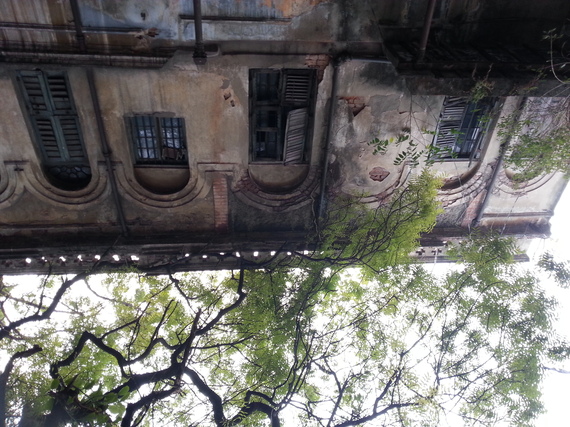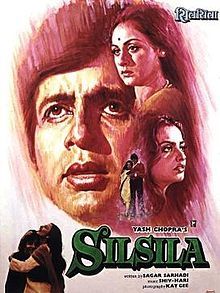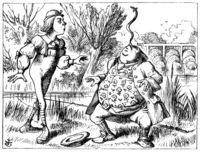My earliest memory is of a coat. Turquoise, with a pattern of broken white lines running through the weave, and round plastic buttons like the white saucers in a doll's tea set. The lining was a deeper shade of blue, the silk sliding cool on my bare arms. I remember a train compartment and my mother doing up the buttons while I stand quite still, absorbed by the intersecting white lines and their pattern of unequal squares. There are other elements in that sieved up little shard of time... the shadowy presence of my father, the stationary train, the cramped space, the symmetry and gleam of parallel tracks through the window. These other remembered bits are grey and amorphous and maybe later constructions of the mind. The vivid blue patch of the coat is the rock on which the grey bits undulate like fronds of kelp in a darker sea of lost time, slippery bits just out of reach.
Colours are the Lego blocks of a remembered childhood, the pure primaries of the glossy plastic, light sliding off smooth bright planes... the reds, the blues and the impossible yellows. A treasured possession was a red plastic 'sunglass'. Perched on the nose, it magically transformed the world, the colour washing over roads, cars and people; the grey grime of the city suddenly full of pink possibilities, a pink skyline blending into a rose-tinted horizon.
A little girl fond of grand plans. One of the earliest was all about colour.
The third floor verandah of a tired old house, the red oxide floor radiating the afternoon heat and my four- or five-year-old self on tiptoe, peering through the wrought iron grille that snaked up and ended in little flowery tips just above my head. A girl on a little red island in a grey sea of dust-coloured houses and trees and a snaking dusty road. What if the houses rose up and mutinied against their grey destinies? How wonderful it would be if all the houses could be painted in pale pastels, the colour of strawberry sherbet and lemon ice, butterscotch yellow with pale cream shutters, lime green with white lintels like sugar frosting and a cool cool lavender that would tame the blaze of the Calcutta sun. The dusty lane is transformed as the vivid colours glint like sugar candy in the sun. No time to be lost. An adult to be found and confided in. The adult chosen for this particular confidence listens gravely and then gently points out practical objections... people may not want pastel pink houses (stuff and nonsense) and even if they did, they may not have the money (what were banks for?) and that I could not quite order people around, certainly not in the matter of house painting. It wasn't as though I was the Prime Minister after all!
This last argument, said in jest, was probably intended to be a clincher of sorts. It had, however, the opposite effect. The little girl interpreted this is a sequential line of action; to live in a city of pastel houses, one must first be Prime Minister, pass a law on house painting and then, as the Prime Minister's prerogative, choose the colour palette. Simple enough. There only remained the small matter of growing up, admittedly an excruciatingly slow business, but it could be done. Bathed in a warm glow of accomplishment, in my expansive mood as Prime Minister, I resolved further good deeds. The poor would be given lovely white sheets to spread on their beds. I remember the thrill of goodness as I clearly saw the poor resting on cool white beds inside their pale pink houses, happy at last. In the course of one afternoon, a little girl in Calcutta had taken the grey squalor out of poverty.
![2016-02-02-1454444862-429185-20151231_155136.jpg]()
Our bedroom window looked out onto a patch of garden run wild. The neem tree put out fresh young leaves around March, a light youthful green, slim and tapering with a serrated edge. The crows loved to nest on the neem. The bulbuls and mynahs preferred the more adult green on the higher branches of the gnarled old jackfruit, the rounded leaves thick like cloth... the dark green serge of a soldier's uniform. The misshapen spiny green fruit ripened to a dirty yellow and split open for the birds and squirrels to feast on. The fig tree shed its fruit the year round, hard green rounds with a brown fuzz. In summer, we would pick the fruit to make a curry for lunch. My personal favourite was the grapefruit tree, the fruit round and heavy with a pale green stippled surface and when you slid a knife through it, the juice would spurt out and sting your eyes. Inside, framed by the thick white rind, were translucent pale pink pellets tightly packed together, each with a little heart of tart juice. The pink was scooped out and rock salt and sugar sprinkled over the broken up chunks. The sharp, tart jolt is a memory that I can still touch with my tongue.
![2016-02-02-1454444337-4208724-Silsila.jpg]()
Just beyond the garden wall, was a busy road and across the road a single screen theatre showing the latest Bombay movies. Amitabh Bachchan and Rekha smiled from gigantic posters. Standing on tiptoe and craning my neck, I could catch their smiles. My interest was piqued by a different set of stars altogether. Every few weeks, men would clamber up the bamboo scaffolding and paint the posters, balancing precariously from their perch high above the ground. I don't know what entranced me more, their artistic skills or their matter of fact balancing act. Within days, the blank canvas was transformed but from my window I could just see vertical sections of the poster, the trees and buildings obscured the rest. Some days I would be rewarded with a patrician nose hooked over rubbery pink lips, on others, sections of eye and cheek, disembodied celebrities, a gestalt of colour, form and light.
Other colours that I remember from around this time are those of my mother's saris... dark maroon like clotted blood, olive waves riding a turquoise sea and the silken brown of melted chocolate with a rainbow border where aqua and teal jostled with chartreuse and coral, like colour trapped on a blob of oil on water. I liked crumpling the coloured oblong of a sun-dried sari and burying my face in it; outdoorsy smells of the wind and the sun mixed with the exhaust fumes of cars and detergent and beneath it all, the sudden, sharp undertone of my mother's skin.
![2016-02-02-1454444279-7214283-fatherwilliam.jpg]()
It was hot as I walked back home from school with my mother. My hand in hers, I was dragging behind as I negotiated the pavement squares in a complicated manoeuvre of planting my foot dead centre on alternate squares without stepping on the lines. It required effort and concentration and there was no reason for me to look up when I did. Soft dark waves framed her face and a red bindi blazed between her brows. She looked a little tired and smiled at me distractedly. She was beautiful, more beautiful than anyone I knew; and yet I had never noticed. Abandoning the complicated pavement ritual, I stepped all over the lines as I pressed my face into her soft waist, just above the line of her sari. Turning up my face, I caught her smile neatly on the tip of my nose and balanced it carefully all the way home , in the manner of old Father William's famous balancing act with the eel.
![]() Like Us On Facebook |
Like Us On Facebook |
![]() Follow Us On Twitter |
Follow Us On Twitter |
![]() Contact HuffPost India
Contact HuffPost India
Also see on HuffPost:
Colours are the Lego blocks of a remembered childhood, the pure primaries of the glossy plastic, light sliding off smooth bright planes... the reds, the blues and the impossible yellows. A treasured possession was a red plastic 'sunglass'. Perched on the nose, it magically transformed the world, the colour washing over roads, cars and people; the grey grime of the city suddenly full of pink possibilities, a pink skyline blending into a rose-tinted horizon.
A treasured possession was a red plastic 'sunglass'. Perched on the nose, it magically transformed the world... the grey grime of the city suddenly full of pink possibilities...
A little girl fond of grand plans. One of the earliest was all about colour.
The third floor verandah of a tired old house, the red oxide floor radiating the afternoon heat and my four- or five-year-old self on tiptoe, peering through the wrought iron grille that snaked up and ended in little flowery tips just above my head. A girl on a little red island in a grey sea of dust-coloured houses and trees and a snaking dusty road. What if the houses rose up and mutinied against their grey destinies? How wonderful it would be if all the houses could be painted in pale pastels, the colour of strawberry sherbet and lemon ice, butterscotch yellow with pale cream shutters, lime green with white lintels like sugar frosting and a cool cool lavender that would tame the blaze of the Calcutta sun. The dusty lane is transformed as the vivid colours glint like sugar candy in the sun. No time to be lost. An adult to be found and confided in. The adult chosen for this particular confidence listens gravely and then gently points out practical objections... people may not want pastel pink houses (stuff and nonsense) and even if they did, they may not have the money (what were banks for?) and that I could not quite order people around, certainly not in the matter of house painting. It wasn't as though I was the Prime Minister after all!
This last argument, said in jest, was probably intended to be a clincher of sorts. It had, however, the opposite effect. The little girl interpreted this is a sequential line of action; to live in a city of pastel houses, one must first be Prime Minister, pass a law on house painting and then, as the Prime Minister's prerogative, choose the colour palette. Simple enough. There only remained the small matter of growing up, admittedly an excruciatingly slow business, but it could be done. Bathed in a warm glow of accomplishment, in my expansive mood as Prime Minister, I resolved further good deeds. The poor would be given lovely white sheets to spread on their beds. I remember the thrill of goodness as I clearly saw the poor resting on cool white beds inside their pale pink houses, happy at last. In the course of one afternoon, a little girl in Calcutta had taken the grey squalor out of poverty.
I remember the thrill of goodness as I clearly saw the poor resting on cool white beds inside their pale pink houses, happy at last.

Our bedroom window looked out onto a patch of garden run wild. The neem tree put out fresh young leaves around March, a light youthful green, slim and tapering with a serrated edge. The crows loved to nest on the neem. The bulbuls and mynahs preferred the more adult green on the higher branches of the gnarled old jackfruit, the rounded leaves thick like cloth... the dark green serge of a soldier's uniform. The misshapen spiny green fruit ripened to a dirty yellow and split open for the birds and squirrels to feast on. The fig tree shed its fruit the year round, hard green rounds with a brown fuzz. In summer, we would pick the fruit to make a curry for lunch. My personal favourite was the grapefruit tree, the fruit round and heavy with a pale green stippled surface and when you slid a knife through it, the juice would spurt out and sting your eyes. Inside, framed by the thick white rind, were translucent pale pink pellets tightly packed together, each with a little heart of tart juice. The pink was scooped out and rock salt and sugar sprinkled over the broken up chunks. The sharp, tart jolt is a memory that I can still touch with my tongue.

Just beyond the garden wall, was a busy road and across the road a single screen theatre showing the latest Bombay movies. Amitabh Bachchan and Rekha smiled from gigantic posters. Standing on tiptoe and craning my neck, I could catch their smiles. My interest was piqued by a different set of stars altogether. Every few weeks, men would clamber up the bamboo scaffolding and paint the posters, balancing precariously from their perch high above the ground. I don't know what entranced me more, their artistic skills or their matter of fact balancing act. Within days, the blank canvas was transformed but from my window I could just see vertical sections of the poster, the trees and buildings obscured the rest. Some days I would be rewarded with a patrician nose hooked over rubbery pink lips, on others, sections of eye and cheek, disembodied celebrities, a gestalt of colour, form and light.
Other colours that I remember from around this time are those of my mother's saris... dark maroon like clotted blood, olive waves riding a turquoise sea and the silken brown of melted chocolate with a rainbow border where aqua and teal jostled with chartreuse and coral, like colour trapped on a blob of oil on water. I liked crumpling the coloured oblong of a sun-dried sari and burying my face in it; outdoorsy smells of the wind and the sun mixed with the exhaust fumes of cars and detergent and beneath it all, the sudden, sharp undertone of my mother's skin.

It was hot as I walked back home from school with my mother. My hand in hers, I was dragging behind as I negotiated the pavement squares in a complicated manoeuvre of planting my foot dead centre on alternate squares without stepping on the lines. It required effort and concentration and there was no reason for me to look up when I did. Soft dark waves framed her face and a red bindi blazed between her brows. She looked a little tired and smiled at me distractedly. She was beautiful, more beautiful than anyone I knew; and yet I had never noticed. Abandoning the complicated pavement ritual, I stepped all over the lines as I pressed my face into her soft waist, just above the line of her sari. Turning up my face, I caught her smile neatly on the tip of my nose and balanced it carefully all the way home , in the manner of old Father William's famous balancing act with the eel.
 Like Us On Facebook |
Like Us On Facebook |  Follow Us On Twitter |
Follow Us On Twitter | Also see on HuffPost:
-- This feed and its contents are the property of The Huffington Post, and use is subject to our terms. It may be used for personal consumption, but may not be distributed on a website.